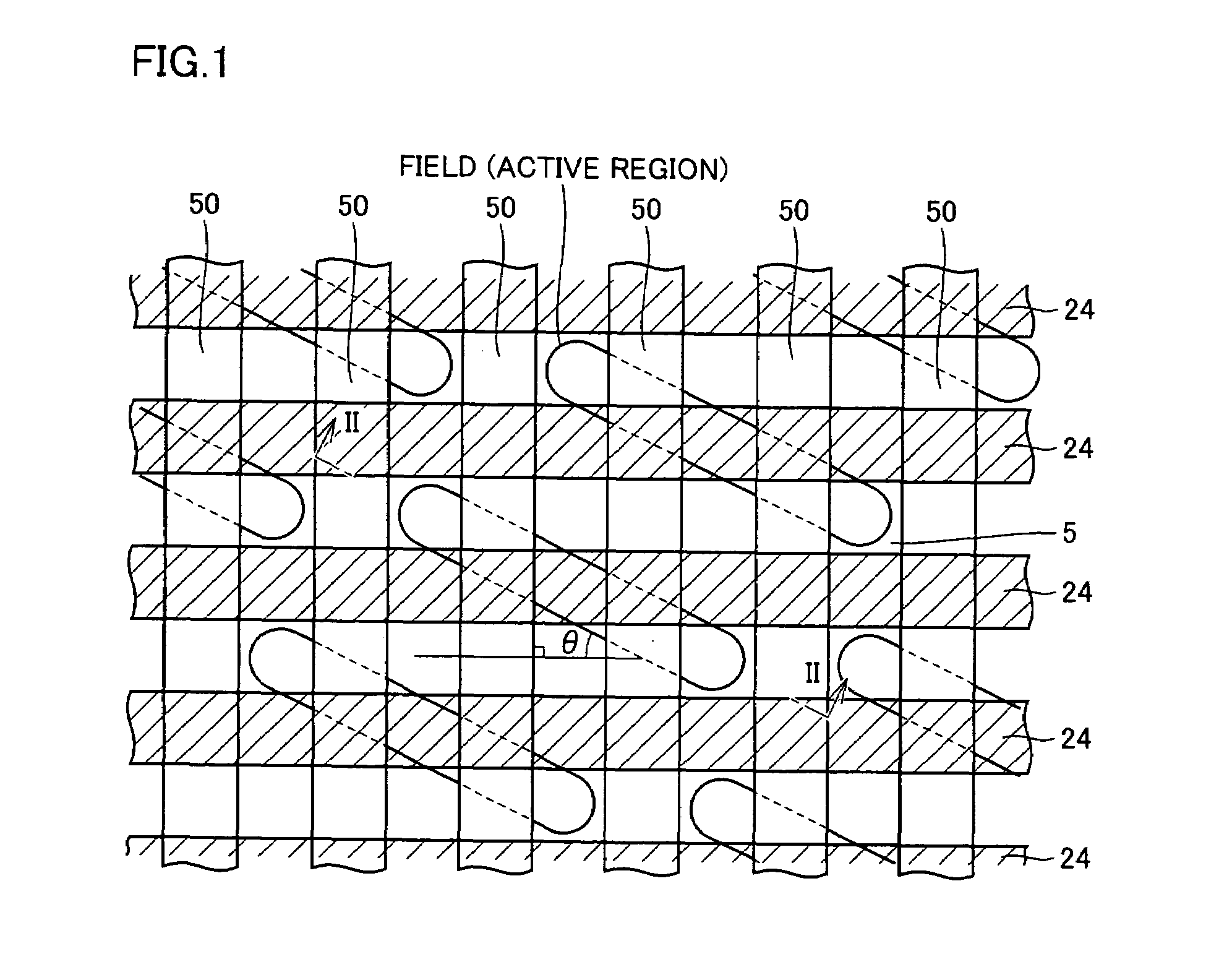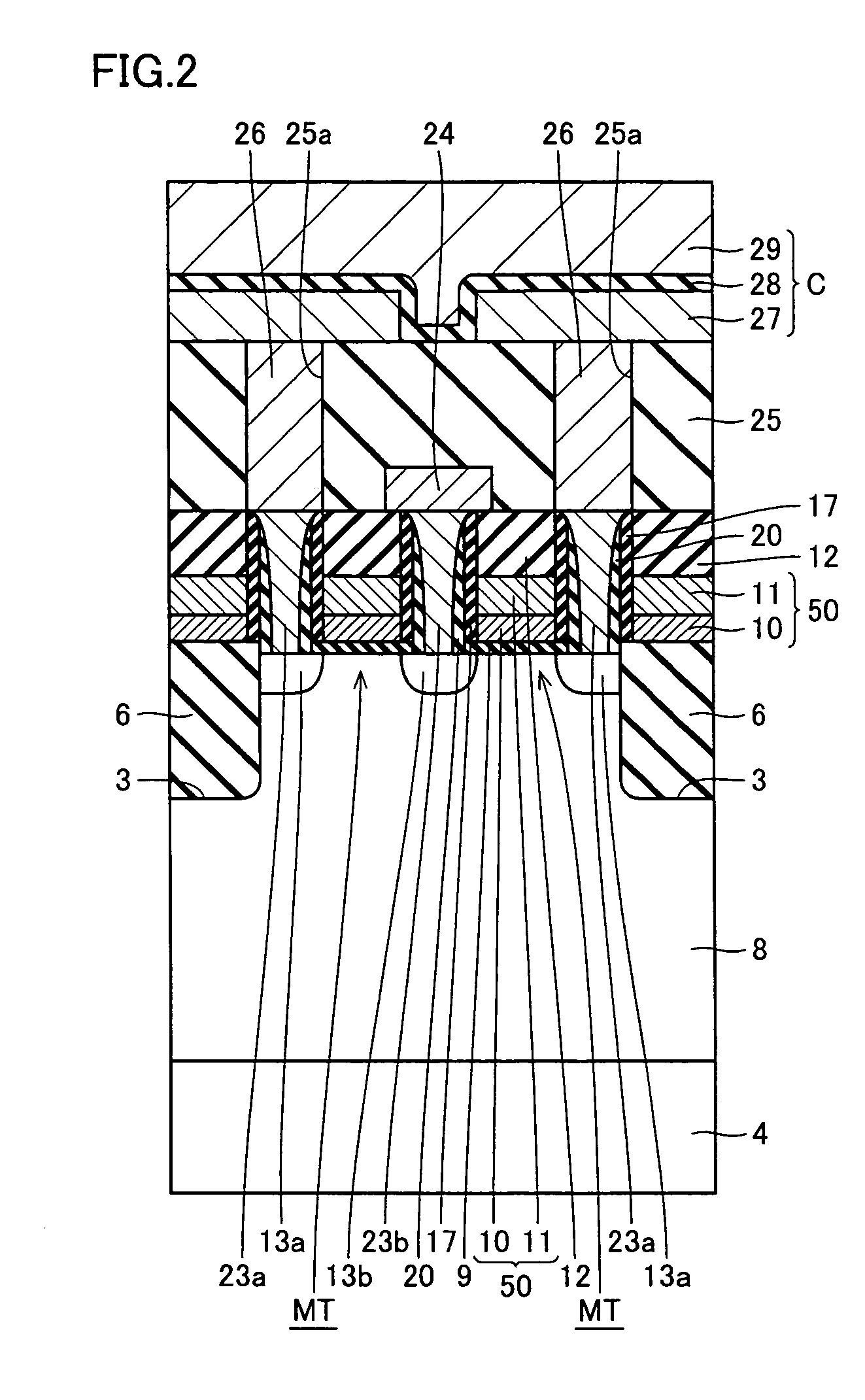Semiconductor device having a self-aligned contact structure
a contact structure and silicon technology, applied in the field of silicon devices, can solve the problems of excessive etching in the contact hole, difficult decrease of the thickness of the etching resistance film, and “aperture defects”, and achieve the effect of suppressing “aperture defects”, ensuring process tolerance of shorts, and significant enlargement of margins
- Summary
- Abstract
- Description
- Claims
- Application Information
AI Technical Summary
Benefits of technology
Problems solved by technology
Method used
Image
Examples
first embodiment
[0031]Referring mainly to FIG. 1, in a memory cell array of a DRAM, for example, each of a plurality of word lines (gate electrode layers) 50 and each of a plurality of bit lines 24 are arranged perpendicular to each other. A memory cell is arranged near an intersecting portion of each word line 50 and each bit line 24. A memory cell transistor is formed in an active region (field). A plurality of such active regions are arranged.
[0032]Referring mainly to FIG. 2, each of the plurality of active regions is surrounded with an element isolation structure on a surface of a semiconductor substrate 4 formed with, for example, a silicon substrate. The element isolation structure is formed with, for example, an STI (Shallow Trench Isolation) structure. The STI structure has a shallow trench 3 formed on a surface of semiconductor substrate 4 and an embedded insulation layer (which is, for example, a silicon oxide film) 6 embedded in shallow trench 3.
[0033]The memory cell has a memory transis...
second embodiment
[0078]Though band-shaped opening pattern 22a in the first embodiment is non-linear and has uneven width, opening pattern 22a having a uniform width may be formed. As opening pattern 22a with a uniform width, a linear band-shaped opening pattern 22a as shown in a plan view of FIG. 26 may be formed. As a result, a memory cell array of the DRAM having a plane layout as shown in FIG. 27 is formed. The capacitor is not shown in FIG. 27.
[0079]As a manufacturing method and a construction of this embodiment are similar to those in the first embodiment except for the aforementioned point, similar elements are indicated by the same reference characters and descriptions thereof will not be repeated here.
third embodiment
[0080]In the steps shown in FIGS. 17-19 in the first embodiment, planarization is performed by the CMP using cap film (hard mask layer) 12 as a stopper to make the upper surface of each of plug conductive layers 23a, 23b and the upper surface of cap film (hard mask layer) 12 parallel to the surface of silicon substrate 4. Planarization by the CMP, however, may be performed after dry etching is performed following the step of FIG. 17 or 18.
PUM
 Login to View More
Login to View More Abstract
Description
Claims
Application Information
 Login to View More
Login to View More - R&D
- Intellectual Property
- Life Sciences
- Materials
- Tech Scout
- Unparalleled Data Quality
- Higher Quality Content
- 60% Fewer Hallucinations
Browse by: Latest US Patents, China's latest patents, Technical Efficacy Thesaurus, Application Domain, Technology Topic, Popular Technical Reports.
© 2025 PatSnap. All rights reserved.Legal|Privacy policy|Modern Slavery Act Transparency Statement|Sitemap|About US| Contact US: help@patsnap.com



